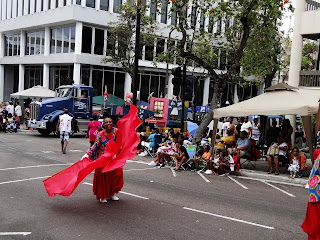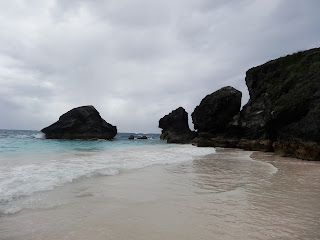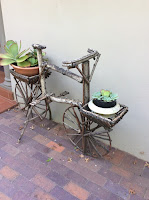We are seeing a lot more action on the beaches. Although, not so much the beaches - we have always encountered someone walking on the beaches, even on colder, blustery days. However, there is now a noticeable difference in numbers of people actually taking to the water and swimming, diving, and snorkeling.
We have been told that locals don't typically use the beaches from Labor Day in September right through to May 24 which is Bermuda Day. Word is that any temperature reading under 80 degrees Fahrenheit is considered far too cold for them. In the summer months, sea temperature is an average of 80 degrees F, and warmest in August at about 85 degrees F. Agreeable temperatures for all, hence lots of locals on beaches everywhere.
In the winter months of November and December the temperature takes a dip to about 70. January to April usually registers a frigid 66 degrees F. Now, we didn't swim from January to April either, but I have it on good authority that swimming is still excellent at 70 to 80 degrees F - can't say I disagree. It just takes that inch-by-inch torture and the final dunk and I can do it too I am sure.
So until January, I will join the throngs of ex-pats for an invigorating bathe in the ocean, whilst the locals look on aghast.
There's a reason that Bermudians call Canadians "human penguins".
There's a reason that Bermudians call Canadians "human penguins".
















































